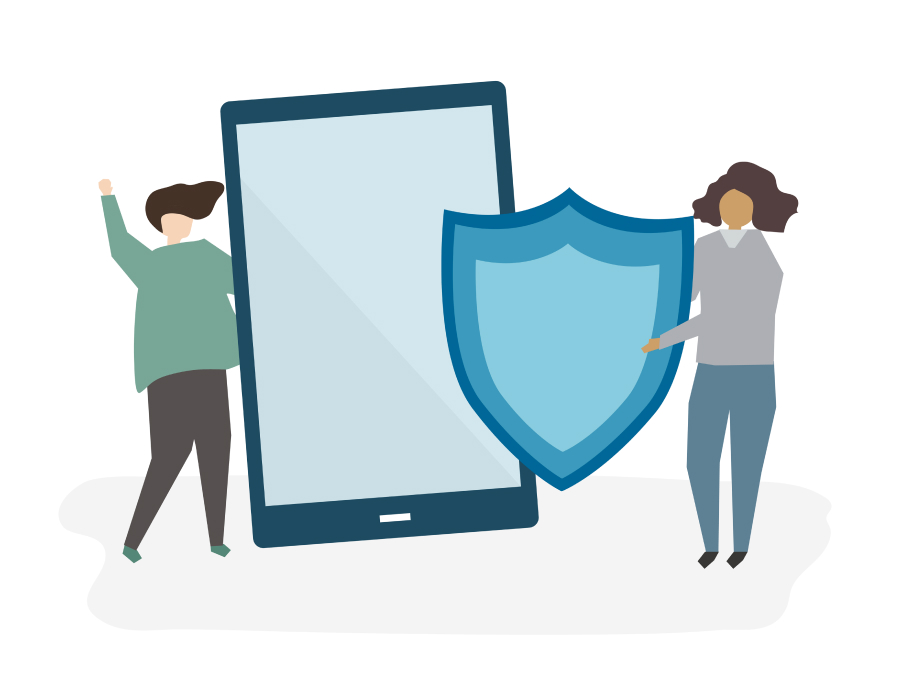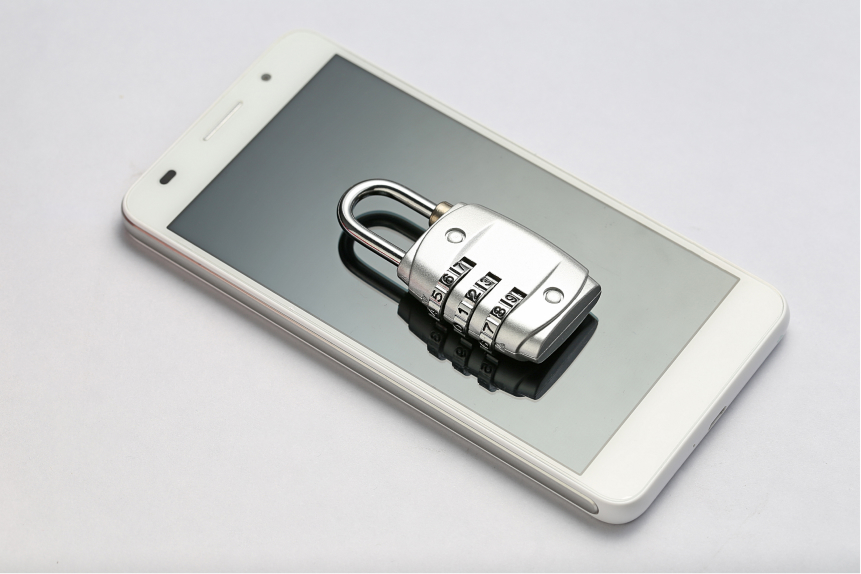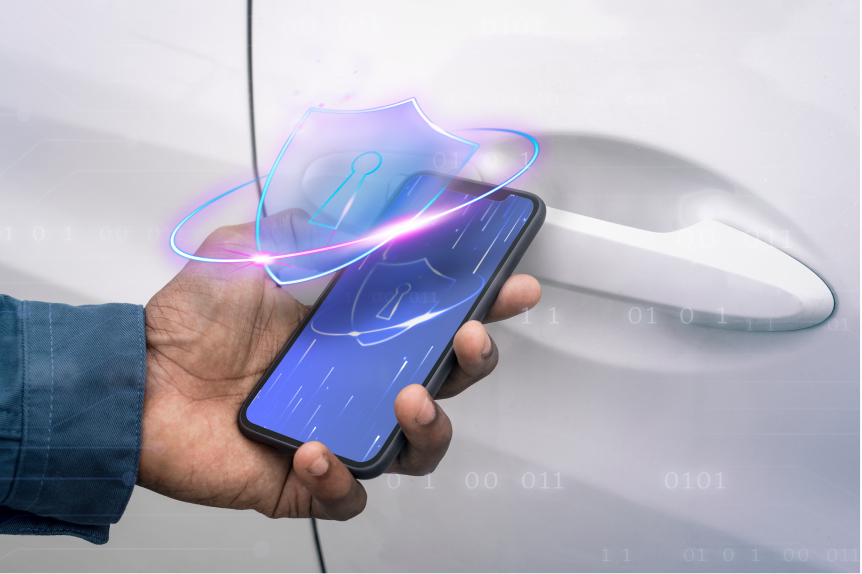
Securing Mobile Devices: A Guide for Information Security
Understanding the Importance of Mobile Security in Information Security
It's undeniable that we live in an era dominated by mobile devices. From the moment we wake up, to the minute we lay our heads down at night, our lives revolve around these small yet incredibly sophisticated devices. They aren't just a source of entertainment, but a hub for our personal and professional data, hence making mobile security an indispensable facet of our lives.
Think about it this way: information security is a giant umbrella protecting all your data from relentless rainfall of cyber threats. Now, mobile security forms a vital part of this umbrella, safeguarding the wealth of information stored in your mobile devices. If overlooked, it's equivalent to leaving a gaping hole in your umbrella, allowing the rain of cyber threats to drench your data, leading to potential data breaches.
Overview of Major Mobile Threats
Picture yourself walking down a dark alley. Sounds ominous, right? That's precisely the digital environment your mobile device operates in, riddled with shadowy threats like malware, spyware, and phishing attacks. These mobile threats are akin to unseen pickpockets lurking in the corners of this alley, ready to rob your mobile device of its vital information.
Smartphone Security: An Essential Component of Mobile Security
Android Security: Common Threats and Safety Measures
Android's popularity is a double-edged sword. On one side, its open-source nature fosters a world of possibilities for customization. On the flip side, this openness also provides ample opportunities for cyber threats to invade your device. Insecure Wi-Fi connections, phishing scams, malicious apps – Android's world, though filled with possibilities, also houses several traps.
But hope is not lost. Like the antidote to a potent venom, Android's own set of security measures, like frequent system updates, mobile encryption, and app permissions, can protect your device from these threats.
iOS Security: Understanding the Risks and Protections
At the other end of the smartphone spectrum, we have iOS, a beacon of secure design. But make no mistake, even the seemingly impenetrable fortress of iOS isn't completely free from risks. However, the frequency and severity of these risks are mitigated by Apple's vigilant stance towards security.
Apple's built-in security measures, like stringent app reviews and regular software updates, act as an all-weather guard, providing consistent protection against various security threats.

Understanding Mobile Threats
Common Mobile Security Threats
The world of mobile threats is a broad and varied landscape, housing a multitude of potential risks. These threats range from software attacks, theft and interception, physical attacks, and more.
Software attacks are often the most common and include things like malware. This term is an umbrella for several types of malicious software, including ransomware, spyware, and viruses. These malicious programs are designed to infiltrate and damage your device without your consent.
Then, we have threats like spyware, which are designed to collect and transfer information about you without your consent. Phishing is another common threat where attackers trick you into giving them your credentials or other private information.
Unsecured Wi-Fi networks also pose a significant threat, as they can be easily exploited by attackers to gain unauthorized access to your device and data. They can infiltrate your system and install harmful software or simply observe your activities to gather sensitive information.
Impact of Mobile Threats on Information Security
The impact of mobile threats on information security can be severe and far-reaching. A compromised mobile device can lead to unauthorized access to a wealth of personal and professional information, leading to potential identity theft, financial loss, and breach of privacy.
When it comes to corporate environments, the stakes are even higher. A single compromised device can grant attackers access to a vast array of sensitive corporate information. This not only puts the company at risk of data breaches but can also lead to loss of customer trust, legal repercussions, and significant financial damage.
Data Protection in Mobile Devices
Importance of Data Protection for Mobile Security
In this digital age, data is the lifeline of our online existence. It is the critical element that drives most digital services and online interactions. Thus, it is essential to safeguard this data from potential threats and attacks.
Data protection is an integral part of mobile security. With mobile devices carrying an extensive amount of personal and professional data, protecting this data from unauthorized access becomes crucial. The failure to protect this data can lead to several detrimental consequences, including identity theft, financial loss, and breach of confidentiality.
Data Protection Measures for Mobile Devices: Mobile Encryption and More
Protecting your mobile data can be achieved through various measures. One of the key data protection strategies is mobile encryption, which involves encoding your data in such a way that only authorized parties can access it. Encryption effectively turns your data into a secret code, which can only be read if you have a specific key to decrypt it.
Apart from encryption, other data protection measures include using strong and unique passwords, enabling biometric authentication, setting up two-factor authentication, managing app permissions carefully, and regularly updating the device's operating system and applications. It's also crucial to back up your data regularly so that in the event of a data loss, you can recover your data easily. All these measures contribute to creating a robust defense system for your data, enhancing your overall mobile security.

Mobile Device Management (MDM) and BYOD
Introduction to Mobile Device Management (MDM)
In an increasingly interconnected corporate world, managing all the devices in a network can seem like an uphill task. This is where Mobile Device Management (MDM) steps in. Think of MDM as a control center, providing the IT department with the tools necessary to enforce policies, secure data, and manage risks across all devices in the network. It's an unsung hero in the realm of device security.
Securing BYOD (Bring Your Own Device) in Corporate Settings
The concept of BYOD (Bring Your Own Device) is like having your cake and eating it too. It allows employees the convenience of using their personal devices for work, fostering flexibility and productivity. However, it also opens up a Pandora's box of security issues, posing significant challenges to corporate security.

Securing Mobile Devices: Practical Measures
Implementing Mobile Encryption
Encryption is a fundamental security feature that aims to protect the data stored on your mobile devices. In its essence, encryption works by transforming plain text data into an unreadable format using an algorithm. This unreadable data, also known as ciphertext, can only be turned back into its original form using a unique key.
Encryption plays a critical role in data protection as it ensures that even if your device falls into the wrong hands or your data gets intercepted during transmission, the information remains unreadable and thus useless to the unauthorized party. Most modern smartphones come with built-in encryption features that you can activate. For example, iOS devices automatically offer data protection by encrypting the device's data, and Android provides full-disk encryption if you have a PIN, pattern, or password set.
Best Practices for Android and iOS Security
Securing your mobile devices involves more than just enabling encryption. It requires a comprehensive approach that considers various aspects of device usage and maintenance. Here are some best practices for enhancing Android and iOS security:
Software updates: Regularly updating your operating system and applications is crucial. Updates often contain security patches for known vulnerabilities that could be exploited by attackers.
Password protection: Use robust, unique passwords for all your accounts and enable biometric authentication features like fingerprint scanning or facial recognition where available.
App permissions: Be mindful of the permissions you grant to apps. Only allow necessary permissions and regularly review them.
Safe downloading: Only download apps from reputable sources such as the App Store for iOS and Google Play Store for Android.
Two-factor authentication (2FA): Enable 2FA on your accounts for an added layer of security. This method requires a second step of verification, usually through a code sent to your mobile device.
Public Wi-Fi caution: Be careful when using public Wi-Fi networks. They can be unsecure and may expose your device to risks. If you must use a public Wi-Fi, ensure you are using a VPN (Virtual Private Network) to secure your connection.
Backup your data: Regularly back up your data to ensure you can recover it if you lose access to your device or if it gets damaged.
Remote wipe: Setup a remote wipe feature. This allows you to erase all data on your device remotely in case it gets stolen or lost.
Remember, maintaining device security is not a one-time task but a continuous process that requires regular checks and updates.
Conclusion
Image suggestion: An image of a secure smartphone with a checkmark.
Recap of Mobile Security in Information Security
In conclusion, it's essential to understand the pivotal role mobile security plays within the larger arena of information security. Like a single weak link can break a chain, overlooking mobile security can lead to significant gaps in your data protection strategy, making you vulnerable to cyber threats and data breaches.
The Future of Mobile Security: Trends to Watch
The realm of mobile security is not static but is a dynamic and ever-evolving field. With the rise of new technologies, the emergence of sophisticated threats, and the increasing reliance on mobile devices, mobile security will continue to be a focal point in the future of cybersecurity.
References
As we wrap up, remember, staying informed is the first line of defense against potential threats. After all, in the digital world, the best offense is a good defense. So, how prepared are you?
- Federal Communications Commission. (2023). Smartphone Security Checker. Available online: https://www.fcc.gov/smartphone-security (accessed on 30 June 2023).
- SANS Institute. (2023). Securing Mobile Devices. Available online: https://www.sans.org/reading-room/whitepapers/pda/securing-mobile-devices-37097 (accessed on 30 June 2023).
- National Cyber Security Centre. (2023). Mobile Device Guidance. Available online: https://www.ncsc.gov.uk/guidance/mobile-device-guidance (accessed on 30 June 2023).
- Symantec. (2023). Internet Security Threat Report. Available online: https://www.symantec.com/security-center/threat-report (accessed on 30 June 2023).
- Lookout. (2023). Mobile Threat Report. Available online: https://www.lookout.com/resources/reports/mobile-threat-report (accessed on 30 June 2023).
 Mark Petrenko
Mark Petrenko 
